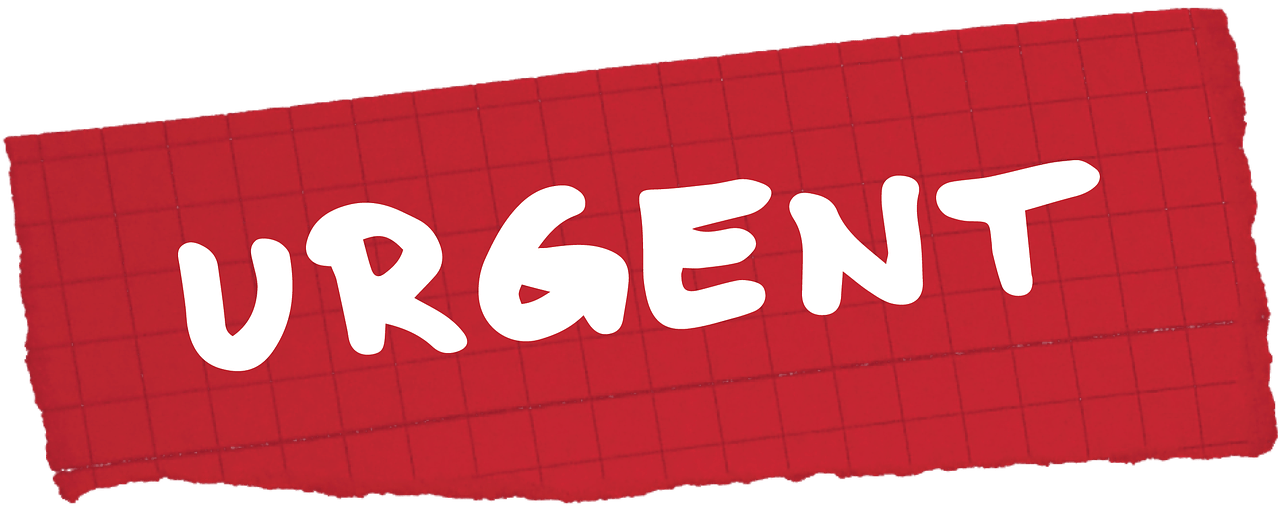In This Article
(Click the links below to move easily to sections of this article)Leading Change: Introduction
Step 1 Summary: Create a Sense of Urgency
Step 2 Summary: Create the Guiding Coalition
Step 3 Summary: Develop a Change Vision and Strategy
Step 4 Summary: Communicate the Change Vision
Step 5 Summary: Empower Broad Based Action
Step 6 Summary: Generate Short-Term Wins
Step 7 Summary: Consolidate Gains and Implement More Change
Step 8 Summary: Anchor Change in the Culture
Conclusion: Limitations of the Kotter Model
Video: Kotter Leading Change Model
Leading Change in the Workplace Article Series
Member Content
- Article: Understanding the Bad, the Good, and Your Role in Change and Innovation
- Video: Improving Your Ability to Lead Change
- Self-Assessment: How Effective Are You as a Change Agent?
- Lesson: How to Communicate the Need for Change
- Lesson: How to Reduce Employee Resistance to Change
- Infographic: Is Your Organization Ready for Change?
- Special Report: 5 Strategies to Build Support for Organizational Change
Leading Change: Introduction
Since the publication of his highly regarded book, Leading Change (#CommissionsEarned), Harvard Professor John Kotter has been widely accepted as a recognized global expert on change leadership. Understanding his eight step leading change model is a requirement for any leader who is serious about implementing change successfully.
John’s eight step model explains the process leaders can follow to effectively lead change in their organizations. It’s a broad model that covers topics that include communication, planning, team building, senior leadership sponsorship, organizational reward systems, influence and negotiation, and organizational behavior. John’s model builds on the work of earlier researchers like Kurt Lewin by providing a fuller context for implementing change in modern organizations.
The following information is a summary overview of the 8-Step John Kotter Leading Change Model:
Leading Change (Step 1): Create a Sense of Urgency

Urgency: You Need to Create It
The first step for leaders is to create a sense of urgency. This is a series of actions that leaders take to communicate with critical stakeholders why change must occur and why it must occur now.
One way to view this step is to see it as an opening argument. For change leaders, creating a sense of urgency is similar to what an attorney does in court in his or her opening argument. The attorney uses information and facts to get the court’s attention and make a compelling argument for their position. Change leaders do this as well by presenting relevant business and industry data that effectively makes the case for expedited change in the organization.
When leaders are effective at creating a sense of urgency, critical stakeholders understand and accept that organizational change has to occur. They understand that the status quo is not acceptable and that the time for making change is running out.
For a detailed discussion of Leading Change (Step 1), click here.
With a sense of urgency, the organization understands why change is no longer optional. Share on XLeading Change (Step 2): Create the Guiding Coalition

Guiding Coalition: Your Change Allies
The second step for leaders is to create the guiding coalition. This is a series of actions that leaders take to identify capable, influential, and critical allies to become their change oversight team.
Think about this step this way: now that a change leader has succeeded in gaining the attention of this talented and credible group, he or she now needs to empower this high performing team to make the change happen. The keys to this step are first to identify the right people who can become committed partners with the change leader through the change launch and its implementation. Next, the change leader has to gain the willingness of the guiding coalition members to work with the change leader to bring about the actual organizational change.
This is more than just assigning people to work on the change project as coalition members. When leaders are effective at creating a guiding coalition, they gain a high performing project leadership team whose members also believe and are committed to seeing the change occur in the organization.
For a detailed discussion of Leading Change (Step 2), click here.
Senior leaders cannot implement change alone. They need willing stakeholders. Share on XLeading Change (Step 3): Develop a Change Vision and Strategy

Change Vision: Get it Right
The third step for leaders and the guiding coalition is to develop a change vision and strategy. This is a series of actions to give the organization a picture of what the future looks like after the change is implemented.
This picture of what the organization can become is both a future that looks appealing and sensible. If it isn’t, then it will be hard for the leaders to sustain organizational commitment to the change effort. In this step, leaders must maintain a balance between setting organizational direction independently and collaborating with the guiding coalition in this effort.
When leaders and the guiding coalition are effective at developing a change vision and strategy, they will have identified the areas of change, provided clear and realistic targets for measuring success, and appealed to the long-term interests of organizational stakeholders.
For a detailed discussion of Leading Change (Step 3), click here.
People are less likely to accept change when the leader's vision of the future looks undesirable! Share on XLeading Change (Step 4): Communicate the Change Vision

Communication is Critical
The fourth step for leaders and the guiding coalition is to communicate the change vision. This is a series of actions to communicate the change vision broadly to the organization to promote understanding and commitment for the new direction.
The goal for leaders in this fourth step of the change leadership process is to capture the minds and hearts of the employees and managers who are necessary to implement this change. With simple messaging that is repeated effectively in different formats, leaders can help the rest of the organization to both understand and accept the need for change.
When leaders and the guiding coalition are effective at communicating the change vision, organizational buy-in occurs. Managers and employers not only accept the need for change but they also desire to see it happen.
For a detailed discussion of Leading Change (Step 4), click here.
When communicating to others about how you want to change your organization, your message should be simple, brief, and appealing. Share on XLeading Change (Step 5): Empower Broad Based Action

Remove Obstacles
The fifth step for leaders and the guiding coalition is to empower broad based action. This is a series of actions to remove obstacles that do not support the change vision.
At this point of the change journey, leaders and the guiding coalition are squarely in the implementation phase. They are actively working with the rest of the organization to make changes to the existing organizational infrastructure (processes, procedures, and organizational structures) to put the wheels of change in motion.
When leaders and the guiding coalition are effective at empowering broad based actions, organizational resistance to change is lessened and the existing organizational infrastructure aligns more closely with the goals of the change effort.
For a detailed discussion of Leading Change (Step 5), click here.
If you ignore the obstacles to change in your organization, then change will never happen. People can find ways to actively and passively resist you. Share on XLeading Change (Step 6): Generate Short-Term Wins

You Need Some Quick Victories
The sixth step for leaders and the guiding coalition is to generate short-term wins. This is a series of actions to sustain the change effort over the long term by generating goodwill through visible organizational short-term wins.
Consider this common outcome of change efforts: leaders and their organizations work hard to effect change but the difficulty of achieving complex goals eventually stalls organizational momentum. When this occurs, the result is sub par change outcomes and frustration in the organization.
Leaders and the guiding coalition can bypass this outcome by sustaining long-term momentum for their change efforts. Two ways to accomplish this are the following:
- Implement visible organizational improvements in a shorter window of time
- Ensure that the improvements are clearly tied to the change effort
When leaders and the guiding coalition are effective at generating short-term wins, they maintain the momentum for change that is critical to any successful change effort.
For a detailed discussion of Leading Change (Step 6), click here.
It's a lot of work to make change happen. Keep the organization from getting discouraged by creating some quick wins. Share on XLeading Change (Step 7): Consolidate Gains and Implement More Change

Keep Moving Forward!
The seventh step for leaders and the guiding coalition is to consolidate gains and implement more change. This is a series of actions to prevent the organization from sliding into complacency and to continue organizational momentum for change.
In this step, leaders and the guiding coalition look beyond the low-hanging fruit of the short-term wins to tackle other projects in the change effort for implementation. This seventh step serves two purposes. First, it prevents the organization from going back to its old way of doing things and second it combats continuing resistance to change.
When leaders and the guiding coalition are effective at consolidating gains and implementing more change, they remove unnecessary processes, internal connections, and inter-departmental procedures that hinder the progress of the change effort.
For a detailed discussion of Leading Change (Step 7), click here.
Some people will resist your change effort no matter how well you communicate and implement it. Share on XLeading Change (Step 8): Anchor Change in the Culture

Making Change Permanent
The eighth step for leaders and the guiding coalition is to anchor change in the culture. This is a series of actions to make changes in the organization that align with the new change effort.
The goal of this step is to take actions to ensure that the change effort becomes firmly established in the organization. Leaders and the guiding coalition make consequential changes to their organizations’ norms and values, human resource processes and procedures, reward programs, training and development, and other infrastructure areas to align these areas with the new direction of the company.
When leaders and the guiding coalition are effective at anchoring change in the culture, the change effort becomes a lasting part of the organizational culture.
For a detailed discussion of Leading Change (Step 8), click here.
Change won't be permanent unless you take steps to make it last. Share on XLimitations of the Kotter Model
Kotter’s Eight Step Leading Change Model is a good blueprint for effecting change in organizations. It — like every other model on any leadership topic — is not perfect, however. There are some disadvantages to the Kotter model.
Some scholars have pointed out that change is a more fluid process that does not necessarily follow a linear, step-progression path. Additionally, the heavy focus on leadership in the Kotter model does not fully account for the financial, political, and external forces that impact the success of a change effort.
While there is some validity to these criticisms, these concerns about the Kotter Change Model can be addressed by incorporating tools such as Lewin’s Force Field Analysis throughout the eight step change process. The use of this tool can help to identify the supportive and resisting forces that oppose a change effort and to develop appropriate organizational responses to promote or lessen these forces.
When assessing the limitation of any leadership model, it is important not to throw out the baby with the bath water. Kotter’s Leading Change Model has withstood the test of time for a simple reason — it’s practical and it works.
Video: Kotter Leading Change Model
Leading Change in the Workplace Article Series
- Leading Change (Step 1): Creating a Sense of Urgency
- Leading Change (Step 2) – Create the Guiding Coalition
- Leading Change (Step 3) – Develop a Change Vision and Strategy
- Leading Change (Step 4) – Communicate the Change Vision
- Leading Change (Step 5): Empower Broad Based Action
- Leading Change (Step 6) – Generate Short-Term Wins
- Leading Change (Step 7) – Consolidate Gains and Implement More Change
- Leading Change (Step 8) – Anchor Change in the Culture
- Kotter’s Eight Step Leading Change Model
This article is accurate to the best of the author’s knowledge.
Content is for informational or educational purposes only and does not substitute for professional advice in business, management, legal, or human resource matters.